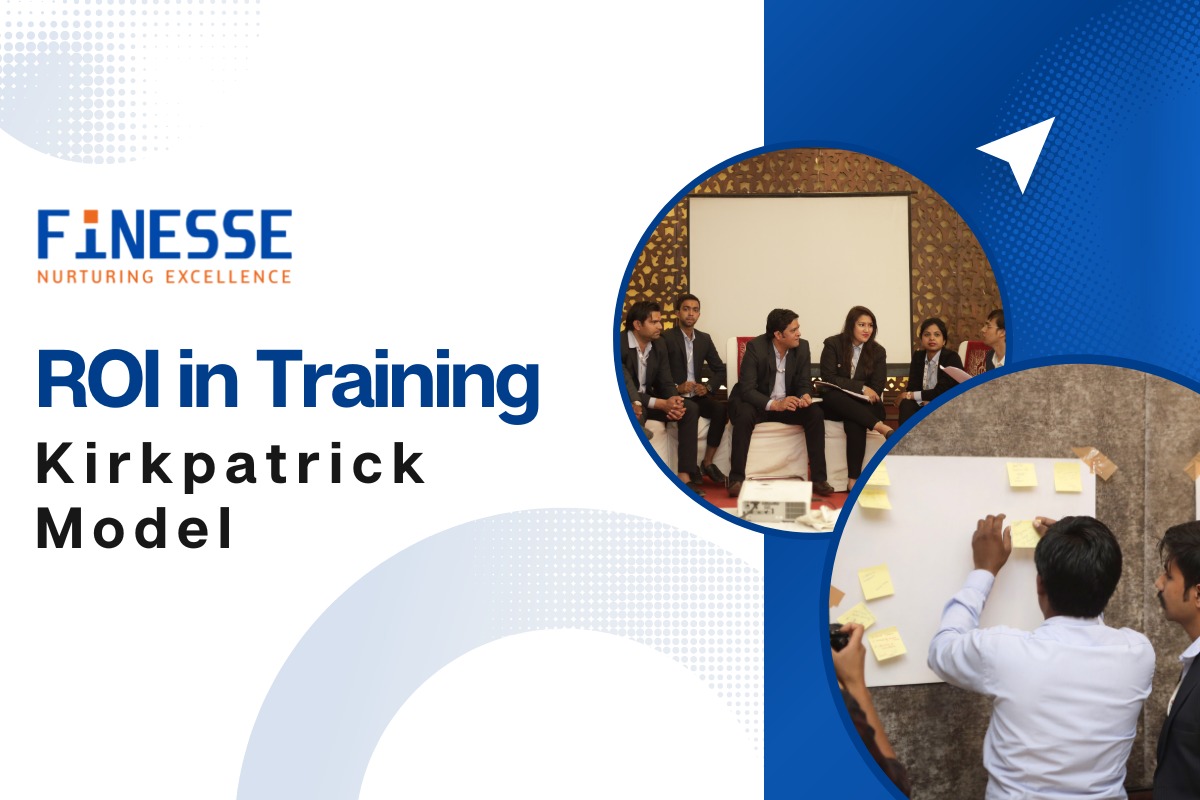Resources Are Scarce And It Is Prudent To Spend Them Wisely!!
Training Head to the HR Head “ This is the set of required training’s basis the request from Business and the results of the Assessment centre. We have also budgeted the targeted “unique training days per employee”. We have shortlisted the best training partners from across the Globe. It’s kept me and my team occupied for over a quarter but now we have a scientific plan which is well within the budget and we just need your approval to roll it out”.
HR head to training Head “ Excellent, I can see the meticulous planning and acumen, I just need the ROI of this plan.”
The training head was stumped – he and his team had come out with a winning plan and now the HR head was asking for ROI. How can one calculate ROI for something intangible as Training. One can calculate the ROI of sales but the ROI of training 🤔…. IMPOSSIBLE
So here’s how we can use the Kirkpatrick Model for Calculating the ROI of Training.
What is the Kirkpatrick Model?
The Kirkpatrick Model, developed by Dr. Donald Kirkpatrick in the 1950s, provides a comprehensive framework for evaluating training programs. It is a simple yet powerful tool that helps organizations measure the success of their corporate training initiatives
The model consists of four levels, each designed to assess different aspects of training:
- Reaction
- Learning
- Behavior
- Results
Let’s break these down.
Level 1: Reaction
The first level of the Kirkpatrick Model is all about gauging participants’ reactions to the training. Did they find the training engaging? Was the content relevant to their job? Did they like the trainer’s style?
At this stage, the goal is to capture immediate feedback from the trainees. This feedback can be collected through surveys or questionnaires at the end of the session. Positive reactions often indicate that the training was well-received, but it doesn’t guarantee that the participants learned something valuable or that their performance will improve.
This is the reason trainers try to keep the material meaningful and create lots of activities, games, case studies, etc.
Level 2: Learning
The second level of the Kirkpatrick Model focuses on learning outcomes. Here, the objective is to determine whether the training led to an increase in knowledge, skills, or a change in attitude among the participants.
This is typically measured through pre-and post-training assessments. It is easier to measure the difference in the case of processes. For something like leadership, there need to be situational assessments to notice the shift.
Level 3: Behavior
The third level assesses whether participants have applied what they learned in their job roles. It’s one thing to learn a new skill in a training session, but it’s another to use it in the workplace.
To evaluate behavior change, you can observe employees over a while after the training has been completed. For example, after first-time manager training, you might monitor how new managers handle team meetings or resolve conflicts. If they’re applying the concepts they learned, it indicates that the training has had the desired effect.
The supervisor or manager observes this activity at the workplace. To encourage trainees to repeat the learned behavior, we offer rewards and recognition. We then motivate the trainee to consistently demonstrate the desired behavior.
Level 4: Results
The fourth and final level of the Kirkpatrick Model looks at the broader impact of the training on the organization. This is where you assess the overall ROI. Did the training lead to an increase in productivity, higher sales, or improved employee satisfaction?
Results can be measured in various ways depending on the training goals. For instance, if a corporate training Organization like Finesse conducts a leadership program, the results might include reduced employee turnover, better team performance, and/or increased revenue.
This level provides a clear picture of whether the investment in training was worthwhile.
Kirkpatrick Model
The Kirkpatrick Model is a valuable tool because it provides a structured approach to evaluating training effectiveness.
For applying the Kirkpatrick Model in Your Organisation, start by defining clear objectives for each training session, then use the four levels of the Kirkpatrick Model to measure success.
Conclusion
At Finesse, we believe that impactful training is essential for driving business success. We ensure that our training programs deliver measurable ROI, helping companies grow and thrive in today’s competitive environment. Whether you need first-time manager training or advanced leadership development, our tailored solutions are designed to meet your unique needs to achieve tangible results.




